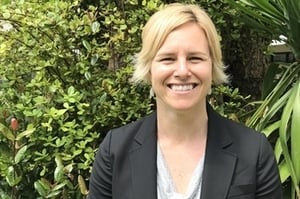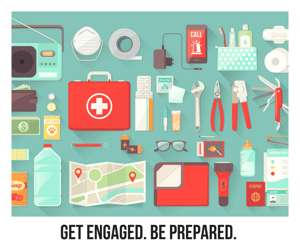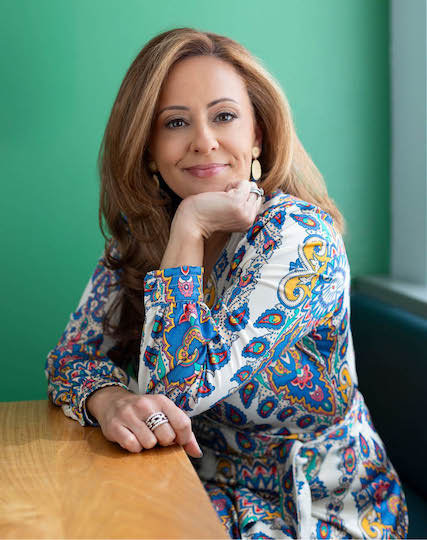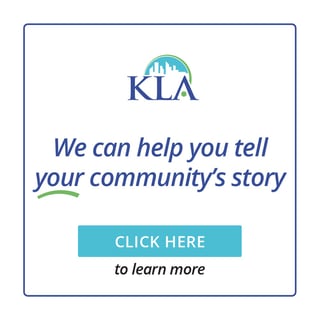Summer is winding down, and National Preparedness Month is upon us. It’s been a summer filled with headlines of devastating wildfires in California, heat waves around the globe and extreme rainfall and flooding events from the US to Japan. It’s clear that communities big and small should be thinking about the impacts they might face now and in the future with climate change.
Among strategies to prepare for natural disasters, “resilience hubs” are gaining momentum as well as a reputation for fostering equity, neighborhood development and local community power.
In my latest podcast episode of SAS Talk with Kim, I spoke with Kristin Baja, Climate Resilience Officer at USDN and formerly with the City of Baltimore, about the concept, value and logistics of resilience hubs and more of USDN’s work on climate resilience.

As many of you know, the USDN (Urban Sustainability Directors Network) is a peer-to-peer network of over 200 local governments from communities across the United States and Canada dedicated to creating a healthier environment, economic prosperity, and increased social equity. USDN is particularly focused on synergy between three broad concepts: greenhouse gas reduction and decarbonization efforts, racial equity and social justice inclusion, and climate adaptation and resilience.
I reached out to Baja as one of the top authorities on resilience hubs, in part because as KLA has amped up our work with communities on climate resilience (the development of Indianapolis’ sustainability and resilience plan known as Thrive Indianapolis and with the Massachusetts Municipal Vulnerability Preparedness program -- more on that below) we’ve field more questions about these hubs: what are they, how do they work, who runs them, and would it work here?
Before USDN, Baja worked with Baltimore developing resilience hubs which she described in the podcast as:
“well trusted and well utilized community serving facilit[ies]. To be successful, they have to be supporting residents -- helping with communication and sharing resources -- before, during, and after an event. They are intended to be a year-round facilities that are used as neighborhood centers for community building and enhancing community adaptive capacity. In the event of an emergency, they will be drop off spots for extra resources and more, but the real intention is to think about how we are building up community capacity year-round and supporting this idea of shifting power away from government and into hands of people so they can react and respond on their own and have the ability to do so.”
She pointed out that a resilience hub can used during emergencies and in the "off season" for events ranging from local job fairs to health clinics, underscoring the multifunctional, community building potential of the space.
Human Connection > Technology
A noteworthy takeaway from this model is how it can rebuild or enhance the human connection within communities -- getting back to a space where neighbors know and care for each other. Baja explains that this factor is what makes a resilience hub different than a typical climate resilience project (i.e. a solar storage project). Often times, people point to cutting edge technology as the savior for climate-related impacts, but it’s important to keep in mind properly supported local communities give immense support internally. In my home state of Massachusetts, the Municipal Vulnerability Preparedness program provides support for cities and towns in Massachusetts to begin the process of planning for climate change resiliency and implementing priority projects. KLA works with a few of these cities who are working through this program, collaborating with key stakeholders, government officials, public safety officials, and concerned citizens. One shared concern? Emergency officials can’t always reach everyone, and it’s important to give citizens the power and tools to be able to react and respond, safely accessing the resources they need and taking care of others. Read more about the key takeaways from our work with the MVP program here.
In my home state of Massachusetts, the Municipal Vulnerability Preparedness program provides support for cities and towns in Massachusetts to begin the process of planning for climate change resiliency and implementing priority projects. KLA works with a few of these cities who are working through this program, collaborating with key stakeholders, government officials, public safety officials, and concerned citizens. One shared concern? Emergency officials can’t always reach everyone, and it’s important to give citizens the power and tools to be able to react and respond, safely accessing the resources they need and taking care of others. Read more about the key takeaways from our work with the MVP program here.
But you don’t have to have a state-supported program like Massachusetts or be on the cutting edge of resilience plans like Seattle and Washington, DC, to employ resilience hubs or tackle climate resilience. She notes high-risk cities like Fort Lauderdale and Salt Lake City are, for example, requiring climate change training for their staff and that cities from Southeast Florida to Puerto Rico to Los Angeles to Minneapolis are all working on resilience hubs.
Where to Start
Interested in creating a resilience hub and thus working to identify the needs for your community and address social and climate vulnerabilities? Baja has some tips of where to start. USDN compiled a working, dynamic list based on their city partners’ top answers to what their resilience hub should have:
- Energy-independent (the space can function when the power grid is down, using solar or a backup source of power for up to 72 hours)
- Storage for backup supplies (blankets, food)
- A kitchen (not necessary, but important for resilience sustainability)
- Proper medical supplies and physical, separate space to treat people in crisis
- ADA accessibility
Read more top line about USDN’s work with resilience hubs around the country here and dive deeper with their resilience hub white paper. KLA is encouraged by all the innovative work USDN is leading -- make sure to catch my chat with Kristin here.
Other climate resilience episodes from our SAS Talk with Kim podcast:
SAS Talk Episode 11: Neighborhood Resiliency (Troy Moon, Portland, ME)
SAS Talk Episode 3: Resilience Financing (Joyce Coffee, Climate Resilience Consulting)
SAS Talk Episode 1: Local Climate Adaptation Plans (Missy Stults)



